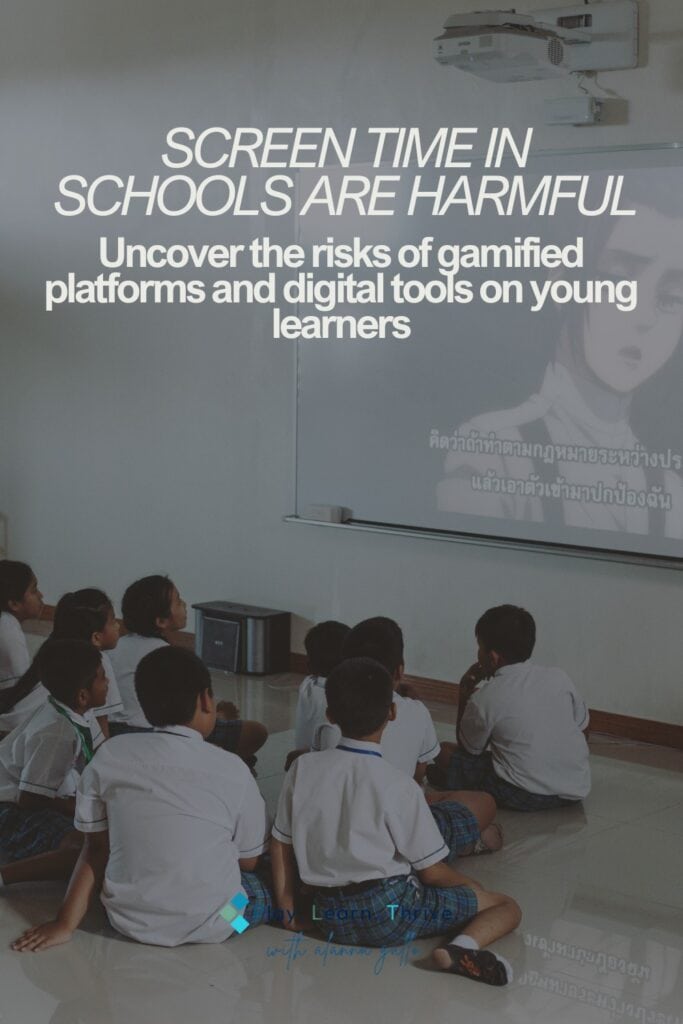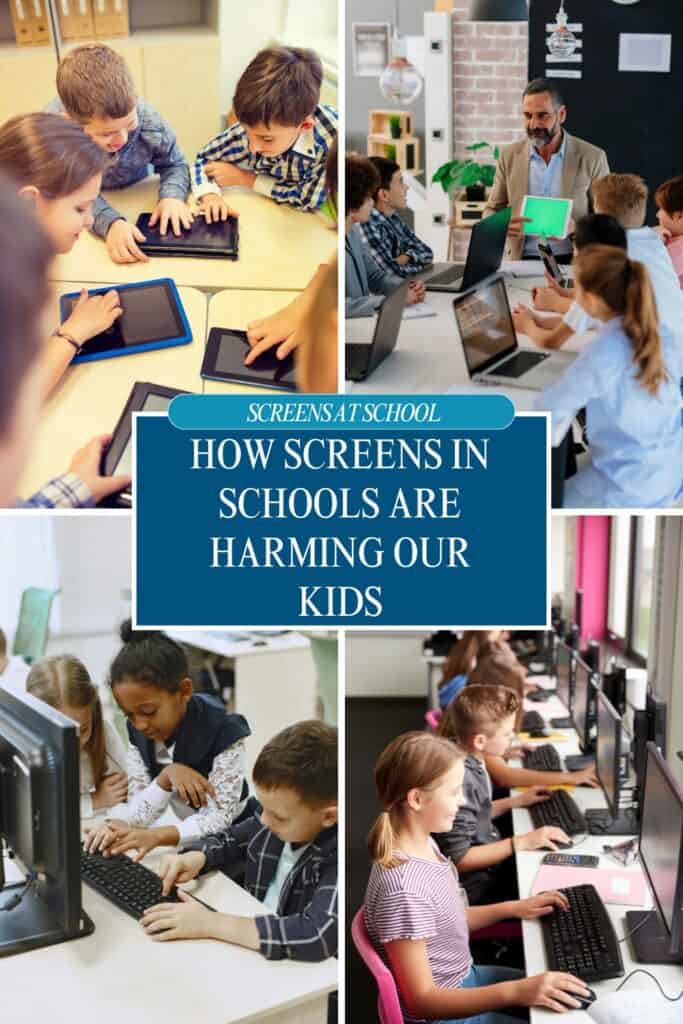The EdTech Illusion: How Screens in Schools Are Harming Our Kids (And What Parents Can Do)
For years, parents have been warned about the dangers of excessive screen time at home. But what happens when those screens are embedded into our children’s education—disguised as progress, innovation, and 21st-century learning?
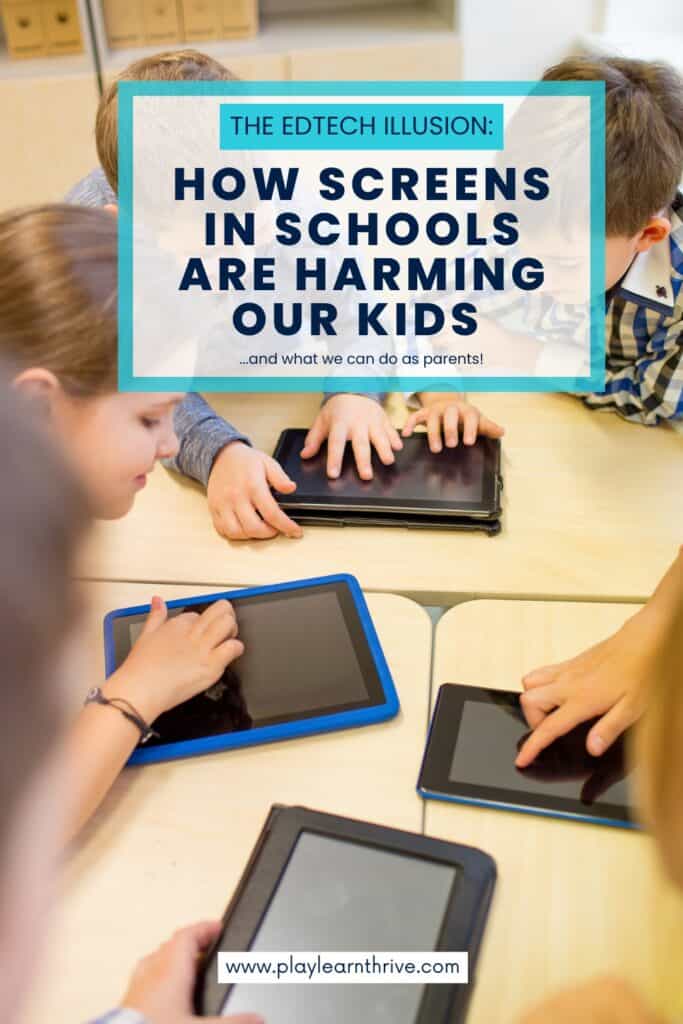
Play. Learn. Thrive.™ only endorses products we authentically love and use. Some of the product links in this post may be affiliate links. That means that if you click them and make a purchase, this site makes a commission. Play. Learn. Thrive.™ is also an Amazon Associate. As an Amazon Associate, we earn from qualifying purchases. It will have no impact on the price you pay or the experience of your purchase.
The truth is, the widespread adoption of educational technology (edtech) in schools has not led to better learning outcomes. Instead, it has contributed to declining attention spans, increased mental health challenges, and a diminished love of learning. Gamified platforms, digital worksheets, and endless online tools promise engagement, but at what cost?
Before we dive in, here’s a little about me so you know you’re getting advice from someone who’s been in the trenches! I’m Alanna Gallo, a former teacher with a master’s in education who saw firsthand how kids were losing confidence, independence, and their natural love of learning. I left the classroom to help parents raise curious, capable, and screen-conscious kids in a world that doesn’t make it easy. My work has been featured in major media outlets, and I’m here to give you real, research-backed advice—without the guilt trips or unrealistic expectations.

As parents, we can’t afford to sit back and let the normalization of screens in schools dictate our children’s education and development. It’s time to examine the real impact of edtech and learn how to push back.
The Broken Promise of EdTech: Why Screens in Schools Don’t Deliver
In the early 2010s, schools across the world rushed to adopt technology as the ultimate solution to learning gaps. Laptops, tablets, and interactive whiteboards became the norm. Today, most children spend hours each day on digital platforms like Google Classroom, iReady, and Kahoot. Proponents of edtech claim that these tools:
- Increase student engagement
- Make learning more accessible
- Prepare students for a digital future
But what does the research say?
1. Screens Reduce Focus and Deep Learning
A 2023 study from Stanford found that students retain less information when learning from a screen compared to physical books or handwritten notes. Digital interfaces encourage skimming over deep reading, reducing comprehension and critical thinking.
Teachers also report that students who use screens regularly struggle with self-regulation, as their brains become conditioned to expect constant stimulation. The more interactive and gamified the learning platform, the harder it is for children to engage with traditional reading, writing, or problem-solving tasks.
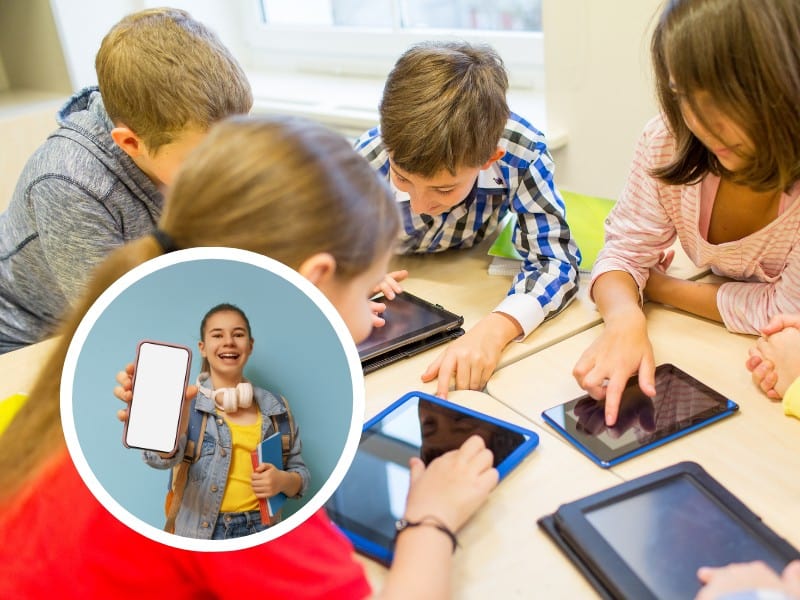
2. Gamification Harms More Than It Helps
Gamification—turning learning into a game with rewards, points, and badges—has been marketed as a way to “trick” kids into learning. But is it effective?
Studies suggest that extrinsic rewards (badges, points, and leaderboards) actually diminish long-term motivation for learning. Instead of engaging with a subject because it's interesting, children begin to see learning as something to endure to earn a digital prize.
This is particularly damaging in subjects that require deep thinking and problem-solving, such as math and reading comprehension. When the game stops, so does the interest.
3. EdTech Worsens Screen Addiction and Anxiety
Children already struggle with screen overuse at home. Schools integrating more digital tools add to this problem, normalizing excessive screen exposure and making it harder for kids to develop healthy tech habits.
A 2022 study in JAMA Pediatrics found that excessive screen time is linked to higher rates of anxiety, depression, and social withdrawal in children and teens. The more time students spend on devices at school, the harder it becomes to disconnect after school—leading to a vicious cycle of digital dependence.
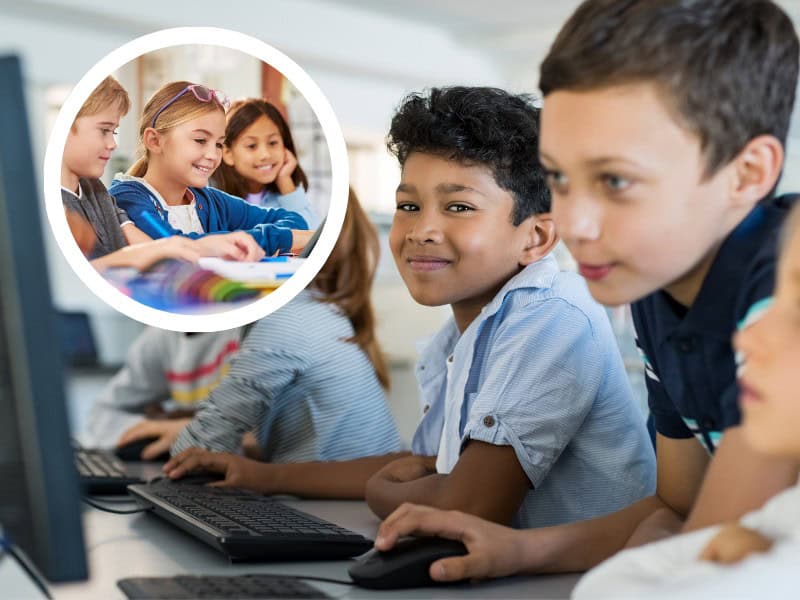
4. Schools Are Selling Out to Big Tech
Many edtech tools aren’t just about education—they're about data collection. Google, Microsoft, and other tech giants provide “free” educational platforms in exchange for student data, shaping young users into lifelong customers.
Despite growing privacy concerns, schools continue to use tools that track student behavior, monitor keystrokes, and collect personal data without parental knowledge. The classroom is no longer just a learning environment—it’s a marketplace.
Need Play Ideas Beyond Screens? We Have the Solution

50 Simple Screen-Free Learning Activities for Curious Kids
These 50 hands-on activities help children develop problem-solving skills, creativity, and real-world knowledge—without needing a screen. Designed to encourage self-directed play, hands-on discovery, and deep learning, this guide gives you a simple way to turn everyday moments into powerful learning opportunities.
How Parents Can Fight Back
The good news? Parents still have power. If we want our kids to receive an education rooted in critical thinking, creativity, and meaningful learning—not just screen-based busywork—we need to advocate for change.
1. Push for Screen-Conscious Schools
Many schools are adopting 1:1 device policies, where every child has a laptop or tablet. Parents can push back by advocating for:
- Tech-free learning blocks: Encouraging schools to set aside screen-free time for hands-on learning.
- Physical books and handwritten work: Insisting on printed materials instead of digital textbooks.
- Real-world engagement: Supporting project-based and experiential learning over gamified apps.
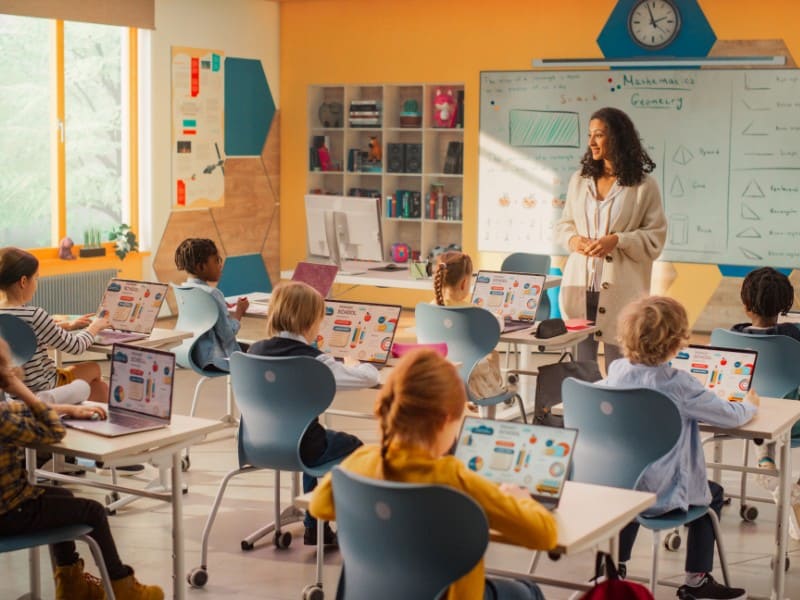
2. Educate Your Child About Screen Manipulation
Schools won’t teach kids to be skeptical of edtech—but you can. Talk to your children about how:
- Screens change how their brain works (less patience, more distraction).
- Gamified learning makes school feel like a game, but real learning happens in the real world.
- Tech companies profit from keeping kids glued to screens, even when it doesn’t help them learn.
3. Request Alternative Learning Options
Parents should feel empowered to opt out of excessive screen use in school:
- Ask if your child can complete assignments on paper instead of a device.
- Request books over e-readers or online textbooks.
- Advocate for less homework that requires screens.
Some schools even allow “analog exemptions” where students can choose to complete work offline.
4. Support Real Learning at Home
If schools won’t fully eliminate screen-based learning, parents can counterbalance it at home:
- Prioritize reading physical books over digital media.
- Encourage handwriting and hands-on activities.
- Make time for unstructured, creative play without screens.
Research consistently shows that kids learn best through movement, interaction, and curiosity-driven exploration—not passive screen consumption.

5. Find (or Create) Alternative Education Models
If your child’s school is fully reliant on screens and unwilling to change, consider:
- Montessori and Waldorf schools, which prioritize hands-on, real-world learning.
- Microschools or homeschool co-ops, which allow for personalized, screen-free education.
- Advocacy within your school district, organizing with other parents to demand change.
Ready to Cut Back on Screen Time?
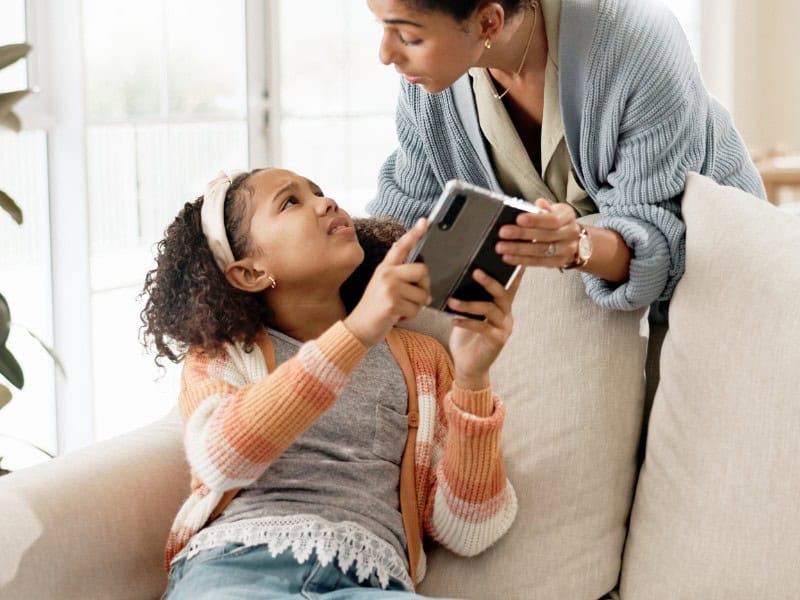
Our free Screen-Free Starter Kit gives you gentle, research-backed strategies to reduce screen time and reconnect with your child—without guilt, tears, or power struggles.
✨ Create a calmer, more connected home—starting today.
The Future of Education Shouldn’t Be Digital—It Should Be Human
We’ve been sold a false promise: that screens in schools are the future of education. But the best learning doesn’t happen through algorithms, gamified apps, or interactive dashboards—it happens through real-world engagement, deep thinking, and human connection.
The edtech industry is booming, but at the cost of our children’s attention spans, curiosity, and mental well-being. It’s time for parents to take a stand. Let’s demand better for our kids—because they deserve an education that prioritizes learning over screens, substance over gimmicks, and genuine curiosity over digital dependency.
The fight starts with us.
Inspired by this post? Be sure to subscribe download my free Screen-Free Starter Kit! For more insights and resources on raising confident, lifelong learners, be sure to follow me on Instagram – can't wait for you to join me!


